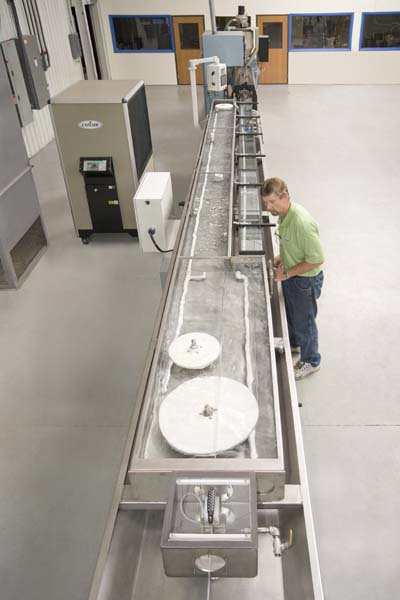Auxiliary equipment manufacturer Conair has made a number of changes to its cooling tank and other downstream equipment and controls, all geared to help processors of plastics tubing improve process stability, and provide stricter control of wall thickness, ovality and cut-to-length tolerances. Systems are available for extrusion of medical tubing and also for non-medical products like aquarium tubing, small-gauge irrigation tubing and pneumatic airway tubing.
December 10, 2010
Auxiliary equipment manufacturer Conair has made a number of changes to its cooling tank and other downstream equipment and controls, all geared to help processors of plastics tubing improve process stability, and provide stricter control of wall thickness, ovality and cut-to-length tolerances. Systems are available for extrusion of medical tubing and also for non-medical products like aquarium tubing, small-gauge irrigation tubing and pneumatic airway tubing.
|
Conair's Medline Multipass tank helps plastic tubing processors save material and extrude better product. |
Within its multipass tank, which sends the tubing along a back-and-forth path through cooling water, the company has integrated a vacuum-sizing chamber. Vacuum sizing is inherently more controllable than air-pressure sizing, explains Bob Bessemer, medical downstream extrusion sales manager for Conair. The manufacturer has been promoting vacuum sizing for almost two decades and has experience with lines for processing of flexible PVC, TPE, TPU and PE tubing.
"As the industry migrates from PVC to more expensive materials, savings of even a few percent in material use becomes very important," added Bessemer. He also notes that using a vacuum means tubing will be less affected by automated downstream functions such as cutting to length and coil winding. "Where processors might have avoided using these techniques because of their impact on overall tube tolerances," he says "they can now confidently institute these labor saving techniques and cut costs further while increasing productivity."
Also part of the MedLine Multipass tank is an oversized, driven roller at the end of the tank which reverses the direction of the tube as it exits the vacuum chamber and begins a second pass through the tank. The roller's large diameter helps minimize the potential for tube distortion or flattening, and because it is driven by a closed-loop vector drive or digital servo, it acts as the primary puller in the line. Located close to the beginning of line, it minimizes the stretching that can occur when the primary puller is far down the extrusion line.
Glass bearings on non-driven rollers reduce drag and stretching as the tubing makes subsequent passes through the tank at line speeds that now sometimes approach 800 feet/minute. A load cell measures tension on the tubing. This device sends a signal to a secondary puller outside the tank to automatically adjust speed to maintain a consistent and repeatable tension and prevent shrinkage issues.
Two gauging units—an ultrasonic gauge upstream and a laser gauge at the downstream end—are linked to the pullers to automatically control wall thickness, concentricity and ovality of the tubing.
About the Author(s)
You May Also Like



